In this excerpt from his lecture on “How the Brain Learns to Read”, Professor Dehaene discusses the effects of orthographic irregularity on the difficulty of learning to read. If, after listening to him, you aren’t wondering: why is it that children can learn to read Italian in 3 months, but need 2-3 years to learn to read English? then you’ve missed something essential to understanding why most U.S. children are not proficient readers (and, according to our history of assessments, have never been).
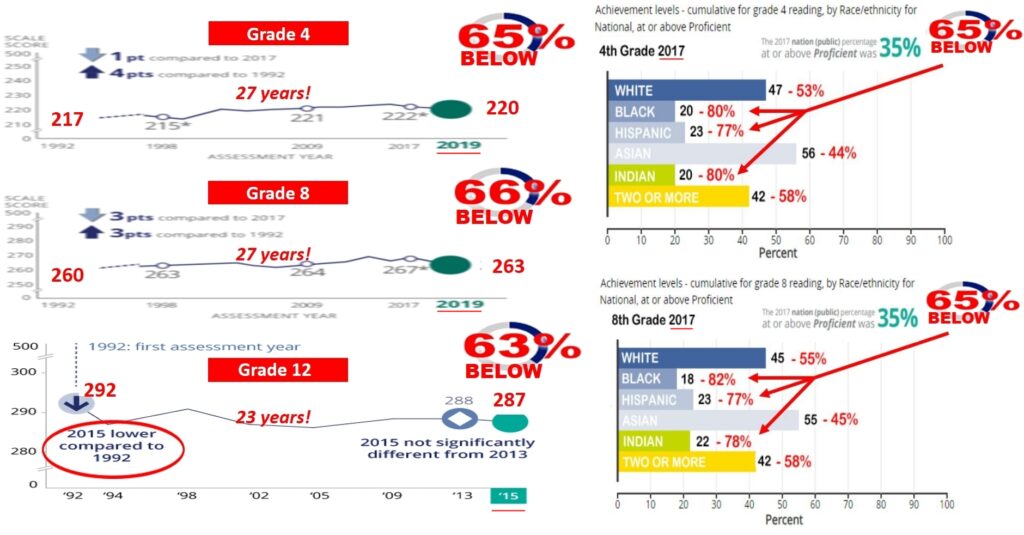 |
Learning to read English involves artificially-complex learning challenges that are so difficult that even after centuries of instructional practice and massive scientific and economic investment most of our kids aren’t very good at it.
It’s not about phonics, structured word inquiry, OG, or any one of the many “Science of Reading” based methods and models out there. All “Science of Reading” based instructional methods are pedagogies for inculcating reflexive strategies for working out / sounding out unfamiliar words. They only exist because our writing system is not intuitively phonetically learnable. They only exist because we assume that the words themselves can’t help learners learn to read them.
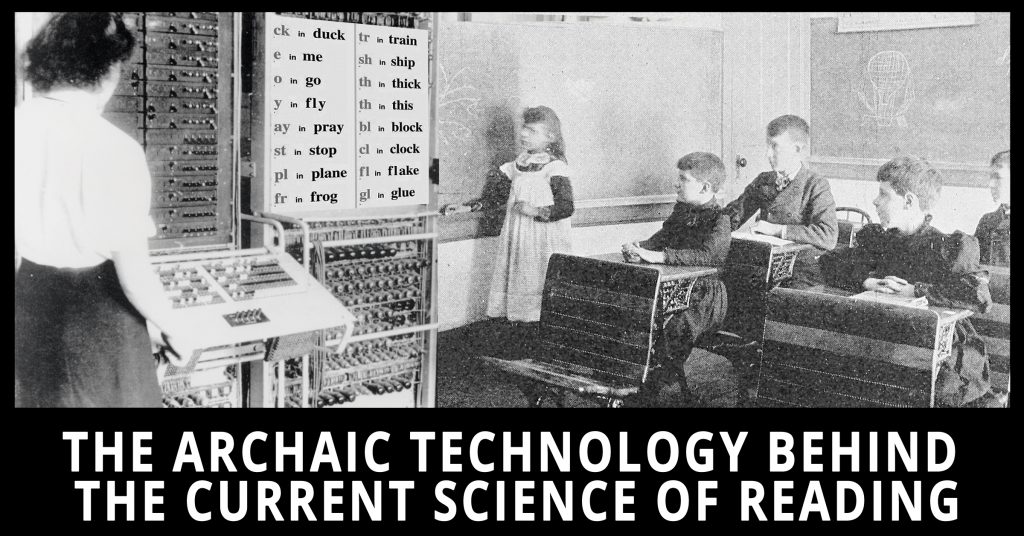
Virtually everything about today’s “Science of Reading” is based on the assumption that the orthography is static. Based on the assumption, that the words children must learn to read with are inert and can’t in and of themselves help children read and understand them. Because the words can’t help, we have no choice but to train learners’ brains to work out unfamiliar words by reflexively applying abstractly learned knowledge and skills. That’s where it all breaks down and always has. That kind of learning requires young natural brains to function like machines in processing a complexly convoluted technological artifact – English orthography.
For centuries we had no choice but to teach readers to read words on paper. But now that we can use “e-text” as the medium of learning to read, instructional models that were inconceivable with the limitations of paper can become the basis for completely re-imagining the process of learning to read. Someday soon today’s version of the “science of reading” will be found in the museum of obsolete paradigms.
I don’t mean to be harsh or shaming. I understand that many people think that they already understand everything they need to understand about reading. But everything these believers think they understand about reading is completely warped around their assumption that words are static objects. If you are in that camp, I am not arguing with you about how you think about reading.
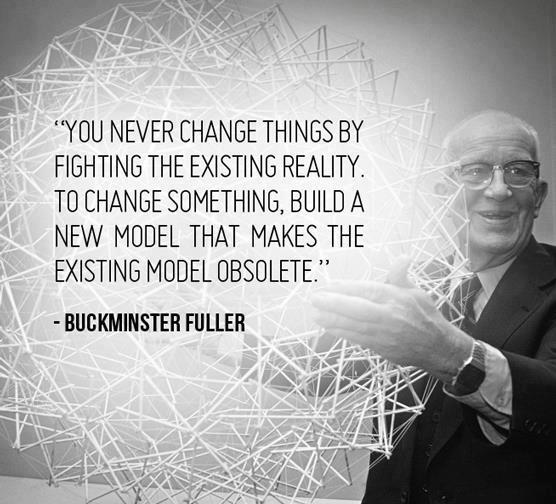
If you think words can only be static, then within the confines of that mental model, the “science of reading” makes sense. But what you are asserting is analogous to defending the science of sail rigging on old sailing ships as if it’s the only way to power the motion of ships. If sails are the only option, you are quite right, but once we can use engines, the science of designing better sails becomes irrelevant to the future of ships. In that sense, history has repeatedly proven Fuller right. Jet engines are not based on perfected propellers. We didn’t get to microprocessors by trying to make better vacuum tubes.
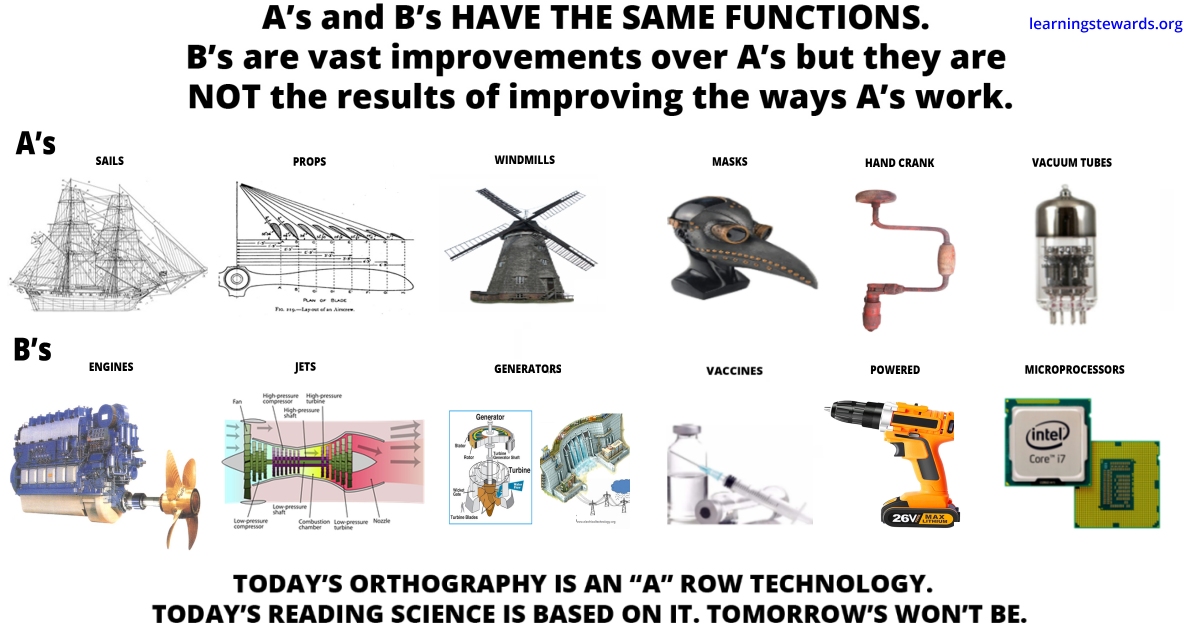
Today’s orthography is an “A” row technology that is largely the same confusing mess that it was 500 years ago.
After decades of efforts to improve reading instruction outcomes that have barely moved the needle (see trends above), it’s time to realize that something altogether different is required.
“We need to reconceptualize what it means to learn to read and who is responsible for its success if we are going to deal with the problem.” – Dr. Russ Whitehurst, Director of the Institute of Education Sciences, Assistant Secretary of Education with the U.S. Department of Education (COTC Interview)
In the near future, kids will learn to read in profoundly more neurologically efficient and emotionally safe ways. In the near future, the majority of kids, including dyslexic kids, will learn to read without being taught (in any way resembling the ways kids are taught today). Instead, their every interaction with every word on every device (phones, tablets, computers, TV sets, augmented reality glasses, etc.) will be supported by “virtual” reading teachers and reference librarians – by “learning-guide bots” that are always tracking alongside their minds and instantly ready to help. Should a learner stumble reading an unfamiliar word, the helpers immediately appear to support and guide them. I am not talking about reading to them, rather scaffolding their learning to read at a level and in ways currently inconceivable to those whose minds are trapped in two-dimensional static orthography. If you are having trouble imagining what I am talking about, click on any word on this page, look carefully at the letters, and then click it again!

The beginnings of what I am describing is available now and it’s free for you, your children, your students, and your school: https://mlc.learningstewards.org/
What do we have to lose? The past 30 years of reading scores?
Here is where the assumption in Fuller’s assertion breaks down. He assumes that the best model wins out. But here, in the case of reading science and practice, that is not the case. Here, the prevailing models of reading instruction are defended by people whose reputations and income streams depend on perpetuating them. Reminiscent of Edison who, because his income and reputation was at stake, did everything he could to stop AC power. “Paradigm Inertia in Reading Science and Policy”
See also: Children of the Code: The Code and the Challenge of Learning to Read It
For a deeper dive into this alternative way of thinking see: “INTERACTIVE ORTHOGRAPHY”

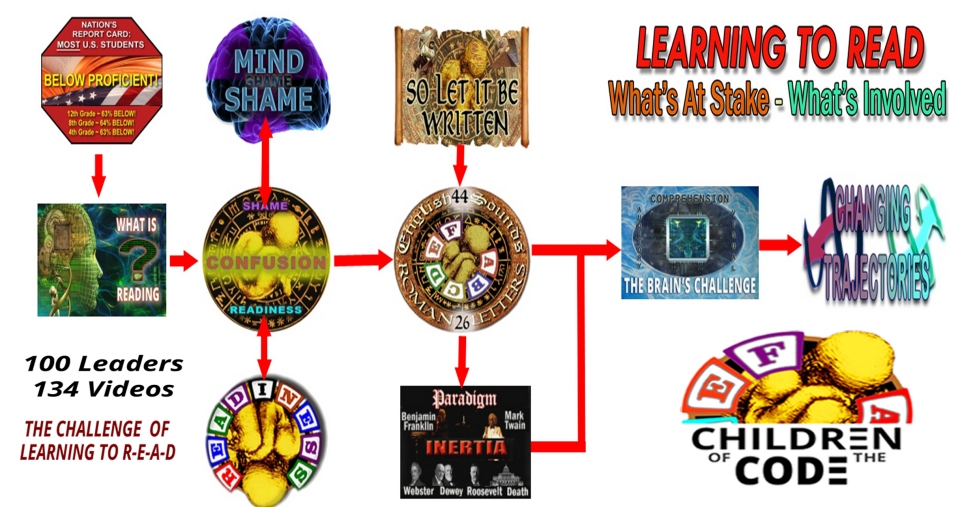
[…] How Do Kids Learn to Read? […]
[…] How Do Kids Learn to Read? […]
[…] How Do Kids Learn to Read? […]
[…] How Do Kids Learn to Read? […]
[…] How Do Kids Learn to Read? […]
[…] How Do Kids Learn to Read? […]